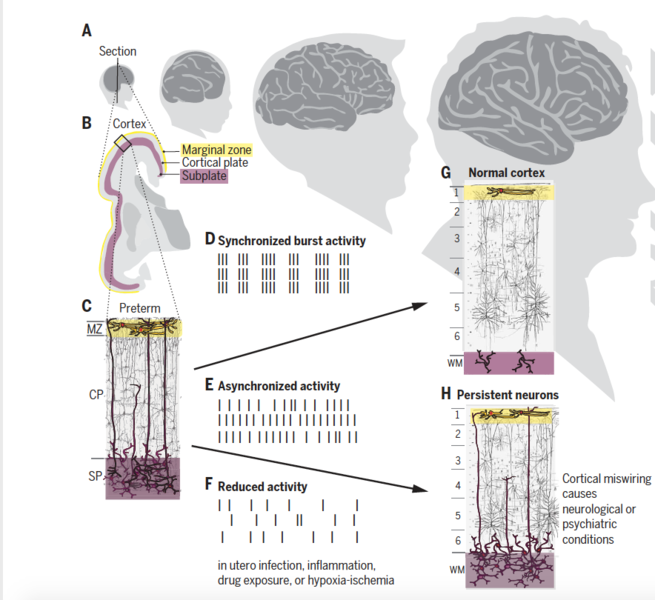The transient blueprint of the brain
News Zoltán Molnár

Early spontaneous synchronized neuronal activity sculpts cortical architecture. Credits: Zoltán Molnár/Patrick Kanold/Heiko Luhmann.
Zoltán Molnár, Professor of Developmental Neurobiology at the University of Oxford and Einstein Visiting Fellow, published a landmark collaborative review in Science together with his colleagues Patrick Kanold (Johns Hopkins University) and Heiko Luhmann (Johannes Gutenberg University Mainz). In their studies on early brain development, they found that transient neurons match the spontaneous and sensory driven activities to shape cortical circuits. This shows that neuronal activity plays an important role much earlier than previously thought.
At birth, our brain is not a blank page. When a newborn child opens the eyes for the first time, the brain is already prepared to process this information. Although it takes months to reach the full capacity of vision, the same neuronal modules and activity patterns are - from the first days on - transiently present to generate an "operable" network in the outer mantle of our brain.
The publication by Molnár, Kanold and Luhmann gives a comprehensive overview of the transient neuronal circuits in both the cerebral cortex and in the thalamus, the circuits that relay and process most of the information from our sensory environment. The paper comes in response to the last two decades of developmental neuroscience research, during which a major focus has been on genetics, whereas the fundamentally important role of electrical activity from the earliest stages of brain development has only recently become evident.
Einstein Visiting Fellow Molnár compares the development of the brain in its earliest stages to the scaffold of a building. "If there are issues with the building work, one can’t understand what went wrong unless we also look at the scaffolds." Crucially, the early transient circuits both process and produce activity patters that are vital for further maturation of the central pathways. Consequently, the sensory nervous system feeds into circuits that are pre-formed to some extent. The review demonstrates that it is vitally important to better understand the transition from early transient to permanent neuronal circuits, as impairments at the earliest stage of brain development can lead to the development of neurological and psychiatric conditions several years or even decades after altered development. These early impairments, namely genetic abnormalities or early pathological conditions such as intrauterine infection, drug exposure or mild hypoxia, may potentially influence and disturb early brain activity and cause cortical miswiring at later stages of development. The difficulty is that examining brains at the time of diagnosing a neurological or psychiatric disorder does not inform clinicians what happened during development.
Ultimately, the authors hope their review can help to remove preconceived notions many people may hold about the developing brain. They seek to understand which factors control and modify this transient neuronal activity. Some remaining questions, which could lead to major new research programmes, are: Do all spontaneous activity patterns fulfil a particular functional role in development? What activity patterns are normal and abnormal and how different do spontaneous activity patterns interact?
Source:University of Oxford, Department of Physiology, Anatomy and Genetics

